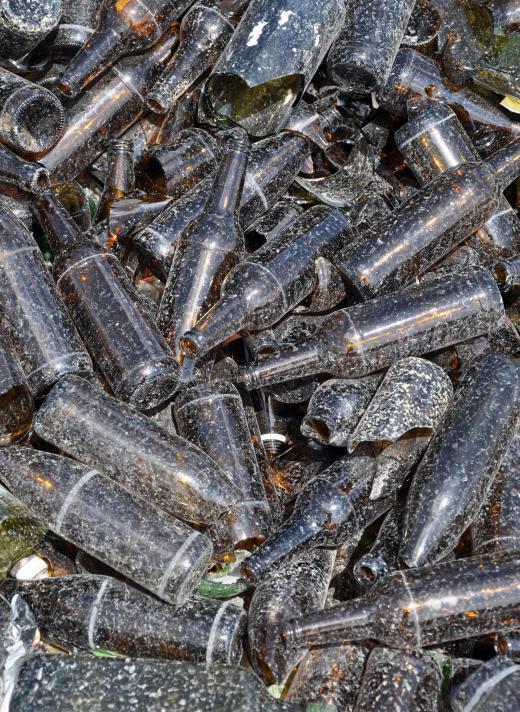A glass crusher is a large machine used to break glass objects into small pieces. These machines operate similar to rock- or gravel-crushing equipment, and can reduce a glass container down to roughly 1/20th of its original size. This makes it easier to store and transport glass for recycling or disposal, and also allows recycling facilities to quickly and easily transform glass containers into a reusable form.
The glass crushing process begins when users drop glass jars, bottles, and other containers into a feeder or hopper. From here, the bottles travel down into the glass crusher itself, which contains an integral conveyor belt to transport the glass. Steel hammers or shoes pulverize the glass into small pieces, and the glass exits into a storage container or bin at the opposite end. The pulverizing action not only breaks the glass, but tumbles it around within the machine to eliminate sharp edges and give the glass a smooth texture. Many glass crusher machines contain mechanisms that also separate out lids and other debris, though some require this task to be performed manually.

Glass crusher machines may be found in a variety of different facilities. Recycling plants and waste management organizations rely on a glass crusher to reduce waste and preserve landfill space. Bottling plants may keep a glass crusher on site to crush glass for reuse within the factory. Restaurants and schools may use these machines to keep glass-related waste small and easy to store until it can be picked up by garbage or recycling staff.

Whether glass is recycled or thrown in a landfill, crushing the glass causes it to take up just a fraction of the space. This makes it easier and more affordable to transport the glass, and allows it to fit in smaller containers, or to fill up less space in the landfill. Crushing is also required prior to recycling, which helps to preserve energy sources and other limited resources. The demand for crushed glass is high, as this material can be used in many different applications. Not only can crushed glass take the place of gravel in paving or land filling operations, but manufacturers also use this material to make countertops and tiles.
Buyers should be aware that glass crusher machines generally require frequent maintenance. This is due to the sharp and abrasive nature of glass, which causes increased wear on mechanical components. These machines also have limited sorting capabilities, and even the best machines may not be able to filter out all unwanted debris.
